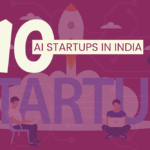In the ever-changing landscape of business, staying connected with your customers is more important than ever. With so much competition and information available, how do you ensure you’re meeting your customers’ needs and keeping them loyal? That’s where CRM, or Customer Relationship Management, comes into play. Let’s explore what CRM really is, how it benefits businesses, and the different types of CRM solutions available today.
What Exactly is CRM?
At its core, CRM, or Customer Relationship Management, is all about managing interactions with customers and potential customers. But it’s not just a tool—it’s a strategy designed to help businesses nurture relationships, streamline processes, and increase profits. Imagine CRM as the engine that drives how a business understands its customers, improves interactions, and ultimately grows its revenue.
Gone are the days of managing client interactions through scattered spreadsheets or manual entries. CRM systems are designed to centralize all customer information, making it easier to track interactions, identify new sales opportunities, and improve overall customer service.
The Benefits of CRM for Businesses
Wondering how CRM can boost your business? Let’s break it down. Whether you’re a small startup or an established enterprise, implementing a CRM solution comes with a host of benefits:
- Improved Customer Insights: By capturing every interaction, CRM gives businesses a 360-degree view of their customers’ behavior and preferences.
- Streamlined Operations: Automating daily tasks such as sending follow-up emails, managing appointments, or tracking leads makes teams more efficient.
- Enhanced Communication: CRM systems keep everyone on the same page, ensuring that marketing, sales, and customer service teams have access to the same data.
- Higher Customer Retention: By focusing on customer satisfaction and resolving issues quickly, businesses can increase customer loyalty and reduce churn.
With CRM, companies can make smarter decisions, offer personalized service, and build lasting relationships.
Breaking Down the Components of CRM
CRM systems are packed with features that help businesses in various ways. Let’s break down the key components that make CRM a vital business tool:
- Contact Management: Store detailed information about every customer or lead, including contact info, interaction history, and preferences.
- Sales Management: Track where each prospect is in the sales pipeline and identify new opportunities.
- Customer Support: Handle support requests and resolve issues with ease, providing a better customer experience.
- Marketing Automation: Plan, execute, and measure marketing campaigns that are tailored to individual customers.
- Analytics and Reporting: Dive into the data to uncover trends, measure success, and optimize business strategies.
These components work together, helping businesses keep a pulse on their customers’ needs and making sure they’re always one step ahead.
Types of CRM Solutions: Which One is Right for You?
Not all CRM systems are built the same. Businesses can choose between several types of CRM solutions depending on their needs, resources, and scale.
Cloud-based CRM
Cloud-based CRM solutions have taken the market by storm. These systems are hosted on the internet, allowing businesses to access customer data from anywhere, at any time. There’s no need to worry about infrastructure or maintenance—everything is managed by the CRM provider.
Key Benefits:
- Accessible from any device with an internet connection.
- Scalable, meaning businesses can upgrade features as they grow.
- Lower upfront costs compared to on-premises solutions.
However, reliance on internet access and third-party servers can raise data security concerns for some businesses.
On-premises CRM
On-premises CRM systems are installed locally on a business’s own servers. While this gives companies full control over their data and customization, it requires a significant investment in IT infrastructure and maintenance.
Key Benefits:
- More control over data and security.
- Customizable based on specific business needs.
On the downside, it’s more expensive and less flexible, making it ideal for larger enterprises that can manage these resources.
Open-source CRM
Open-source CRM allows businesses to access the CRM software’s source code and modify it to fit their specific needs. This is a popular option for companies with specialized workflows or those looking to save on licensing fees.
Key Benefits:
- Completely customizable and often free.
- Ideal for businesses with complex or unique needs.
However, it requires in-house expertise to implement and maintain, which can be a challenge for smaller teams.
Real-World CRM Applications
CRM isn’t just a fancy tool; it’s actively helping businesses across various industries improve their customer relationships and operations. Here are a few ways CRM is being used:
Contact Centers
For companies running contact centers, CRM systems are lifesavers. They help agents track customer inquiries, review past interactions, and resolve issues faster. It ensures that no customer slips through the cracks, leading to a higher rate of satisfaction.
Social CRM
In today’s social media-driven world, businesses must engage with customers where they spend most of their time. Social CRM integrates social platforms like Facebook and Twitter, allowing businesses to interact with customers, respond to inquiries, and even track brand sentiment across different channels.
Mobile CRM
With remote work and mobile teams becoming more common, Mobile CRM allows employees to access important customer data and records from their smartphones or tablets. This flexibility is key for sales teams who are constantly on the go, ensuring they always have the tools they need to close deals.
B2B CRM Practices
When it comes to B2B (business-to-business) operations, CRM plays a huge role. These businesses typically have longer sales cycles and involve multiple decision-makers. CRM systems help B2B companies keep track of complex client relationships, manage sales pipelines, and make sure follow-ups are timely and effective.
Challenges of CRM
Of course, like any tool, CRM comes with its own set of challenges. One of the biggest hurdles is ensuring employees actually use the system correctly. Many businesses struggle with CRM adoption, leading to inconsistent data entry or underutilization of features.
Data privacy is another challenge, especially with increasing regulations like GDPR. Companies must ensure they are complying with legal requirements when handling sensitive customer data.
How AI is Changing CRM
So, how is Artificial Intelligence (AI) influencing the world of CRM? AI is transforming CRM by making systems smarter and more predictive. Instead of manually sorting through mountains of data, AI-powered CRM solutions can analyze customer behavior, predict future actions, and provide insights to help businesses personalize their approach.
Imagine having a CRM’s that automatically scores leads, suggests the best times to reach out, and even crafts personalized marketing messages. That’s the power of AI in CRM’s.
Conclusion
CRM has revolutionized how businesses manage relationships with customers. From streamlining operations to improving customer experiences, CRM’s systems play a critical role in helping businesses thrive. Whether you’re a small company looking for a simple cloud-based CRM’s or a large enterprise in need of a more complex on-premises solution, CRM’s can be tailor to meet your needs.
And with AI driving the future of CRM’s, the possibilities for optimizing customer relationships are endless.
Read More: Microsoft layoffs: Xbox division hit with another round of job cuts in 2024
Final Thoughts
In the fast-paced world of modern business, investing in a CRM’s system isn’t just a smart move—it’s essential. As customer expectations continue to grow, CRM’s solutions will evolve to help businesses stay connected, engaged, and competitive in a customer-driven marketplace.










